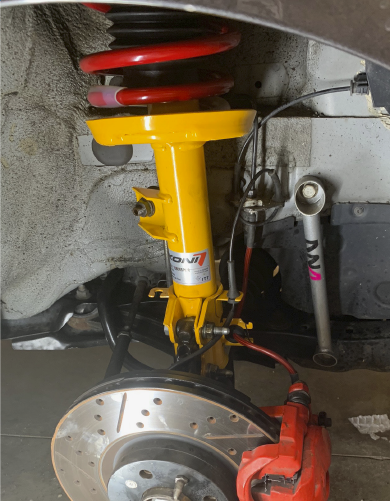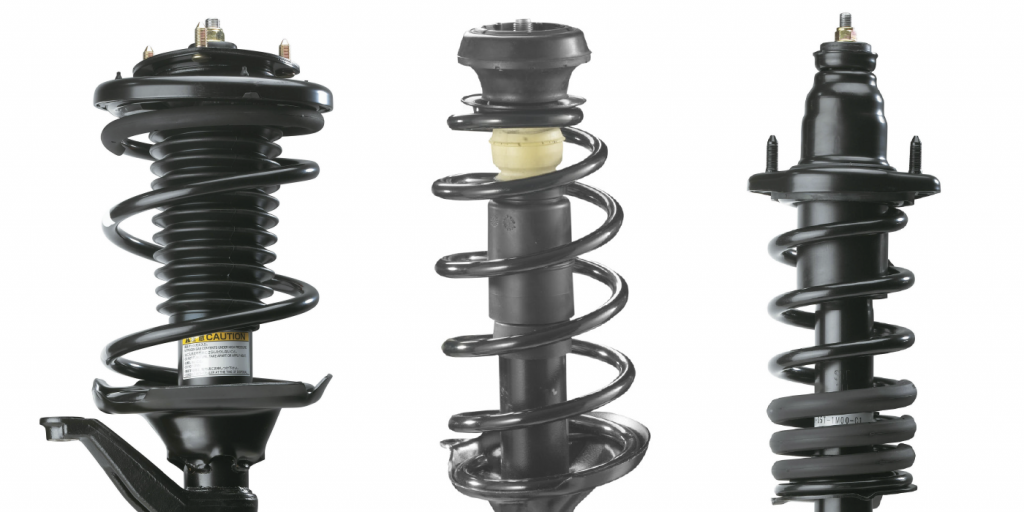Should I inspect struts every time?
Yes! A complete inspection lays the groundwork for excellent customer communication and increases the possibility of a sale. The results of the inspection can help personalize the sales pitch to the individual customer.
The car feels like it corners and rides decent – what else should I check on a test drive?
Shocks and struts help keep the vehicle stable during acceleration and braking, not just under cornering. When a vehicle’s shocks and struts are damaged, the front end can dive when braking while the rear end squats during acceleration.
How can struts and shocks change how the ABS works?
The role of ride control and tires becomes even more critical on vehicles equipped with ABS, traction control and stability control systems. As in an emergency lane-change situation, the driver can now steer under panic braking. This means that weight transfer and vehicle pitch can be even more extreme. Having worn struts with weak springs can turn an emergency lane change into snap understeer followed by snap oversteer.
What can cause a strut to wear out?
Even under normal conditions on a smooth road, shocks stroke an average of 1,750 times for every mile traveled. Every stroke wears the strut rod, seal and internal components.
Can a worn strut cause a spring to fail?
If the strut is worn, the springs will have to work harder to control the suspension and body. This could cause a unit to wear out sooner, causing ride height and ride problems.
What happens if the Strut Or suspension bottoms out?
If the suspension bottoms out, contact between the piston and the bottom of the tube could occur. This can damage the piston and the valving.

What matters more for recommending ride control: mileage or inspection?
Mileage alone is a poor indicator of worn struts. Regular inspection is the only way to determine a strut’s condition. No two drivers have the same commute.
Do struts wear The same As shock absorbers?
Because struts are actually part of the suspension, they wear differently than shocks. If the upper strut mount is binding, the force is transferred through the rod to the strut’s body. Inside the strut’s body, the rod is supported by the piston and at the top of the strut housing by a bushing or bearing. Wear can be dramatic because the strut has to do the work of the bearing. Instead of the strut bearing turning and pivoting, the piston turns in the strut housing, thereby creating wear.
Why are most struts gas-charged?
The reason why gas chambers or bags are in most struts is to reduce foaming or aeration of the oil. Without pressure inside the strut, cavitation and foaming occurs as the oil passes through the valving. If all the gas escapes, the shocks can overheat and fade. This makes for a very bouncy ride.
Are they all the same?
Valving in most replacement shocks is vehicle specific. When a vehicle is designed, the shock or strut is designed to dampen certain spring rates, work with a particular tire package or options and is tuned to vehicle dynamics desired by the OEM. The bottom line is to use high-quality replacement components. Also, pay attention to vehicle options and wheel sizes when ordering parts.
What is included with a loaded strut?
In addition to the strut itself, a loaded strut includes the upper strut mount, strut bumper and boot, spring seat and insulators, and a new coil spring. All the parts are assembled as a complete unit.
Can I replace just one loaded strut?
All struts and shocks should be replaced in sets. Replacing one or two at a time can create a balance problem that could make the vehicle unstable when braking and accelerating.
Why were loaded struts invented?
The loaded strut was first conceived as a DIY product shade tree mechanics could install at home without the risk of bodily harm from flying springs. It was intended to be a “bolt-on” product that did not require special tools. The original product offering centered around older applications that were prone to spring failures like the Ford Taurus and Toyota Camry. But, many shops and technicians saw the potential of the product as a way to boost productivity and profits.
What if the customer only wants a strut and not a loaded strut? how do I write the estimate?
The value of the loaded strut can be expressed as a comparison between the costs of both parts and labor when compared to conventional strut replacement. While a customer’s initial investment in purchasing a loaded strut can be significantly higher than that of just a mount and “bare” strut, this sort of objection is an apples-to-oranges comparison.
To really give the customer an apples-to-apples comparison, you may opt to write your estimate in two sections. The loaded strut option will be very straightforward – and quite short, too. Since everything required for each assembly is contained in one SKU, there will be at most four lines for parts and then a line for labor. For the second section, give the customer a breakdown of the cost for each individual component required for a complete repair, explaining that each of these pieces is already included in the cost of the loaded assembly. When purchased individually, these components tend to add up quickly, and often exceed the cost of the pre-assembled unit. Itemize the difference in labor costs, pointing out the additional time required to “rebuild” the strut, which is above and beyond the time already required for removal and reinstallation.














